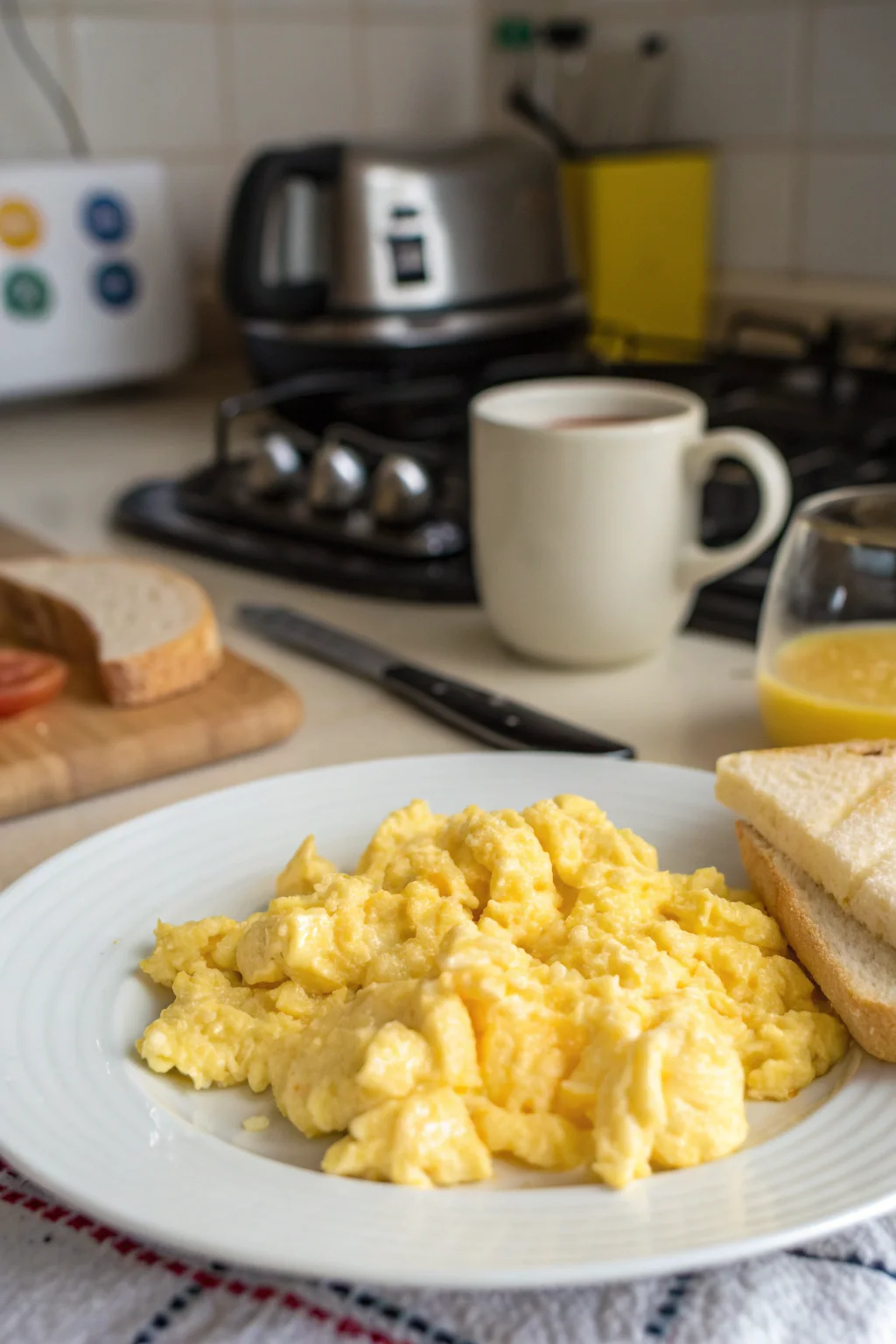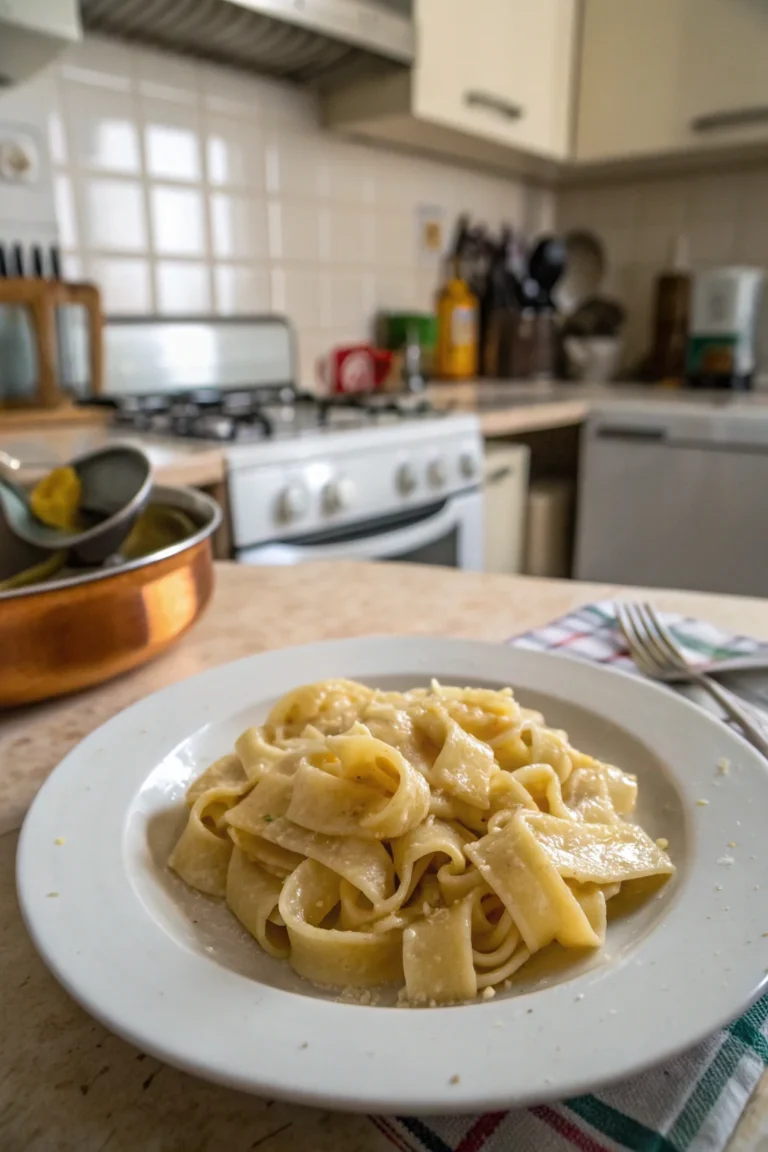Can You Reheat Scrambled Eggs? | Safe Methods
Scrambled eggs are a breakfast staple for many, offering a quick, nutritious, and versatile meal option. However, what happens when you make too many or have leftovers? Can you reheat scrambled eggs safely without compromising taste and texture? The good news is that you can, and there are several methods to ensure they remain both tasty and safe to eat. In this article, we’ll explore common questions about reheating scrambled eggs, providing you with practical tips and safe methods to enjoy your leftovers.
Table of Contents
Is It Safe to Reheat Scrambled Eggs?

Yes, it is safe to reheat scrambled eggs if done correctly. The primary consideration is to ensure they are heated to an internal temperature of 165°F (74°C) to kill any potential bacteria, such as Salmonella. Use a reliable food thermometer to check the temperature if you are unsure. By adhering to this temperature guideline, you minimize the risk of foodborne illnesses and ensure that your eggs are safe to consume.
When reheating, it’s crucial to consider the initial cooking and storage process as well. Always start with fresh, high-quality eggs, and cook them thoroughly the first time around. This sets a good foundation for safe reheating. If you are reheating eggs that contain other ingredients, such as cheese or vegetables, make sure that these ingredients are also fresh and were properly cooked and stored initially.
How Should You Store Scrambled Eggs Before Reheating?
Proper storage is essential to maintain the quality and safety of your scrambled eggs. Store them in an airtight container in the refrigerator within two hours of cooking. This helps prevent bacterial growth, which can occur rapidly at room temperature. Eggs can be safely stored in the refrigerator for up to 3–4 days. For optimal freshness, try to place the container in the main compartment of the refrigerator rather than the door, where temperatures can fluctuate.
When storing scrambled eggs, consider dividing them into smaller portions. This allows for more efficient cooling and makes reheating quicker and easier since you only reheat the amount you plan to eat. If you have a large batch, using shallow containers can also help the eggs cool more rapidly, reducing the time they spend in the temperature danger zone where bacteria can thrive.
What Is the Best Method to Reheat Scrambled Eggs?
The microwave is one of the quickest and easiest methods for reheating scrambled eggs. To do this effectively, place your eggs in a microwave-safe dish, cover them with a damp paper towel to retain moisture, and heat on medium power for 15-20 seconds. Stir the eggs halfway through to ensure even heating. If the eggs aren’t hot enough, continue heating in short increments, checking the temperature each time. This method is particularly convenient for busy mornings when you need a fast and easy breakfast solution.
For those concerned about the texture, adding a small splash of milk or cream before microwaving can help maintain the eggs’ creaminess. This method works well when you’re in a hurry, but it’s important to monitor the eggs closely to avoid overcooking, which can lead to a rubbery texture.
Can You Reheat Scrambled Eggs on the Stovetop?
Yes, reheating on the stovetop is an effective method, especially if you have time and prefer a more controlled reheating process. Use a non-stick skillet over low heat to prevent the eggs from sticking and drying out. Add a small amount of butter or oil, then add the scrambled eggs. Stir frequently to heat evenly, which usually takes 3-5 minutes. This method allows you to monitor the eggs closely, ensuring they reach the desired temperature and texture without becoming rubbery or overcooked.
The stovetop method is ideal if you want to refresh the eggs with additional ingredients, such as cheese or vegetables. Adding these ingredients during reheating can enhance flavor and provide an opportunity to create a more substantial meal. For instance, tossing in some spinach or diced bell peppers can turn simple scrambled eggs into a more nutritious dish.
Is It Safe to Reheat Scrambled Eggs in the Oven?

Reheating scrambled eggs in the oven is safe but less common due to the time it takes. However, it can be a great option when reheating large batches or when you’re already using the oven for other dishes. Preheat your oven to 300°F (150°C), place the eggs in an oven-safe dish, cover with foil to prevent drying, and heat for about 10-15 minutes. Check periodically to ensure they are evenly heated. This method can be particularly useful for brunch gatherings where you need to serve several people at once.
If you are using this method, consider adding a bit of cheese on top of the eggs before placing them in the oven. This can create a delicious melted layer, adding flavor and moisture. Additionally, using a casserole dish allows you to incorporate other leftover ingredients, like cooked bacon or sausage, creating a hearty breakfast bake.
Can You Reheat Scrambled Eggs in an Air Fryer?
While not a typical method, you can use an air fryer to reheat scrambled eggs. Set the air fryer to 300°F (150°C) and place the eggs in a heatproof dish. Heat for about 5 minutes, checking halfway to ensure they don’t dry out. The circulating air in the fryer can quickly dry out the eggs, so monitoring them is crucial. This method is ideal for those who already use their air fryer for other reheating tasks, offering a convenient and quick solution.
To prevent drying, lightly grease the dish or add a small amount of butter to the eggs before placing them in the air fryer. This not only helps retain moisture but also enhances flavor. The air fryer method is particularly useful when reheating small amounts of eggs, as it can be more efficient than preheating and using an oven.
How Many Times Can You Reheat Scrambled Eggs?
It’s best to reheat scrambled eggs only once. Repeated cooling and reheating can increase the risk of foodborne illness due to potential bacterial growth. Additionally, each reheating cycle can further alter the texture and flavor of the eggs, making them less appetizing. Consume them immediately after reheating for safety and optimal taste. If you anticipate having leftovers, consider dividing them into single-serving portions before refrigerating, so you only need to reheat what you plan to eat.
If you find yourself with a large batch of leftovers, consider using them in different dishes over several meals. This way, you’re reheating only once and making creative use of the leftovers without compromising safety.
What Are Some Tips to Prevent Scrambled Eggs from Drying Out?
To keep eggs moist and appetizing, consider the following tips: – Add a splash of milk or cream before reheating. This can help maintain moisture and improve texture. Simply stir in a small amount before reheating to keep the eggs soft and creamy. – Use a damp paper towel to cover eggs in the microwave. This helps trap steam and prevents the eggs from drying out during the reheating process. – Avoid overheating, which can make eggs rubbery and unpleasant. Monitor the eggs closely and reheat in short increments to maintain their quality. – Consider adding a pat of butter to the eggs before reheating, especially when using the stovetop method. This can enhance flavor and help keep the eggs moist.
Additionally, if you’re reheating eggs in the oven, covering the dish with foil can keep the moisture in and prevent the eggs from becoming dry and tough. For stovetop reheating, frequent stirring and low heat are key to retaining the eggs’ softness.
Can You Freeze Scrambled Eggs?
Yes, you can freeze scrambled eggs. This is a great option if you anticipate not being able to eat all of your leftovers within a few days. Allow them to cool completely, then transfer to a freezer-safe bag or container. Label the container with the date to keep track of storage time. They can be frozen for up to 1-2 months. For best results, thaw the eggs in the refrigerator overnight before reheating. This gradual thawing process helps maintain the eggs’ texture and flavor.
When freezing scrambled eggs, consider portioning them into individual servings. This makes it easier to thaw and reheat just the right amount as needed. If you often find yourself with leftover eggs, planning and portioning before freezing can save time and reduce waste.
How Long Can You Keep Scrambled Eggs in the Fridge?
Scrambled eggs can be kept in the refrigerator for up to 3-4 days. Ensure they are stored in an airtight container to maintain freshness and prevent the absorption of other odors from the fridge. If you plan on keeping them for the upper limit of this timeframe, it’s especially important to check for signs of spoilage before reheating and consuming.
For best results, store the eggs in the coldest part of the fridge, typically the back of the main compartment. This helps maintain a consistent temperature, reducing the risk of spoilage.
What Are Signs That Scrambled Eggs Have Gone Bad?
Identifying spoiled eggs is crucial to avoid foodborne illnesses. Spoiled eggs may exhibit the following signs: – A sour or off smell, which is often the most immediate indicator that the eggs are no longer safe to eat. – A change in color or texture, such as a dull or slimy appearance. – Mold growth, which may appear as green or black spots on the eggs.
If you notice any of these signs, it’s best to discard the eggs. Always err on the side of caution when it comes to food safety. Remember, even if the eggs look or smell slightly off, it’s better to be safe than sorry.
Are There Health Risks Associated with Reheating Eggs?
The main risk associated with reheating eggs is bacterial growth if eggs are not stored or reheated properly. Bacteria such as Salmonella can grow rapidly in improperly stored eggs, leading to foodborne illnesses. Always follow safe food handling practices to minimize risks. This includes prompt refrigeration, safe reheating methods, and consuming reheated eggs immediately. The CDC guidelines provide more detailed information on food safety practices.
Understanding the importance of proper food hygiene is key to preventing illness. This includes keeping your kitchen surfaces clean, washing your hands before and after handling eggs, and ensuring that all cooking utensils are properly sanitized.
Can You Reheat Scrambled Eggs with Other Ingredients?
Yes, you can reheat scrambled eggs with other ingredients, such as cheese, vegetables, or meats. However, it’s important to be cautious and ensure all components reach an internal temperature of 165°F (74°C). Covering dishes while reheating can help distribute heat evenly and prevent drying. This is especially important when dealing with mixed dishes, as different ingredients may heat at different rates. Reheating methods like the microwave or oven can be particularly effective for these types of dishes.
When reheating mixed dishes, consider the density and moisture content of the ingredients. Denser ingredients, like meats, may require more time to heat thoroughly, so plan accordingly. Covering the dish with a lid or foil can help retain moisture and heat the ingredients more uniformly.
How Does Reheating Affect the Nutritional Value of Scrambled Eggs?
Reheating can slightly alter the texture and taste of scrambled eggs, but it doesn’t significantly affect their nutritional content. Eggs remain a good source of protein and essential nutrients after reheating. They continue to provide benefits such as high-quality protein, vitamins, and minerals. The key is to avoid overcooking, which can degrade some nutrients, particularly heat-sensitive ones like certain B vitamins. Ensuring the eggs are reheated gently helps preserve their nutritional integrity.
While reheating may cause a slight loss of some nutrients, the overall nutritional value of eggs remains largely intact. They continue to be an excellent source of essential amino acids, vitamin D, and choline, contributing to a balanced diet.
What Are Some Creative Ways to Use Reheated Scrambled Eggs?
Reheated scrambled eggs can be a versatile ingredient in various dishes, adding both flavor and nutritional value. Consider the following creative options: – Breakfast burritos or tacos: Add reheated eggs to tortillas along with cheese, salsa, and your choice of protein or vegetables for a quick and delicious meal. – Fried rice or stir-fry dishes: Scrambled eggs can enhance the flavor and protein content of these dishes. Simply toss them in during the final stages of cooking. – Egg salad sandwiches: Mix reheated eggs with mayonnaise, mustard, and seasonings for a tasty sandwich filling. – Quiches or casseroles: Incorporate reheated scrambled eggs into baked dishes for added richness and flavor. These options provide variety and make efficient use of leftovers, reducing food waste.
Exploring these options can not only provide variety to your meals but also make efficient use of leftovers, reducing food waste and stretching your grocery budget. By integrating reheated eggs into new dishes, you can enjoy a range of flavors and textures, keeping your meals interesting and satisfying.
Wrap-Up
Reheating scrambled eggs is both possible and safe when you follow the right methods. Remember to store, reheat, and consume them within the recommended time frames to enjoy a delicious and safe meal. Explore different reheating techniques to find what works best for your taste and schedule. Whether you prefer the convenience of a microwave, the control of a stovetop, or the versatility of an oven, there’s a method to suit your needs. For more tips on egg preparation, visit our cooking guide.






